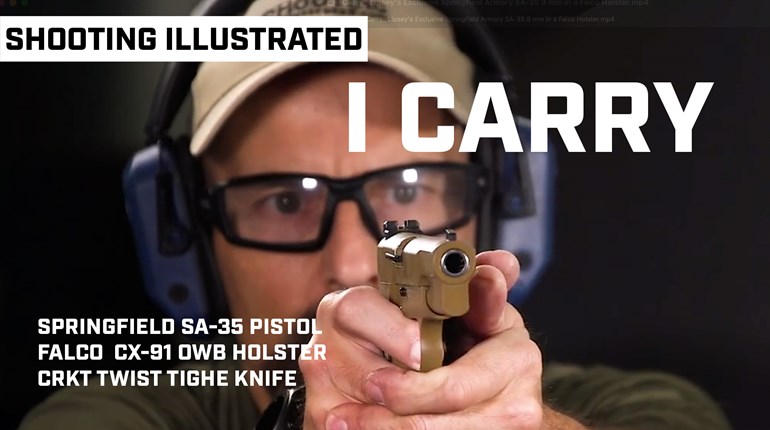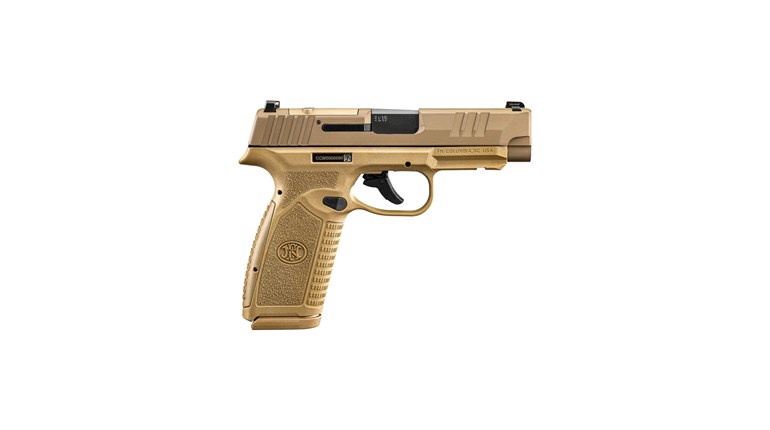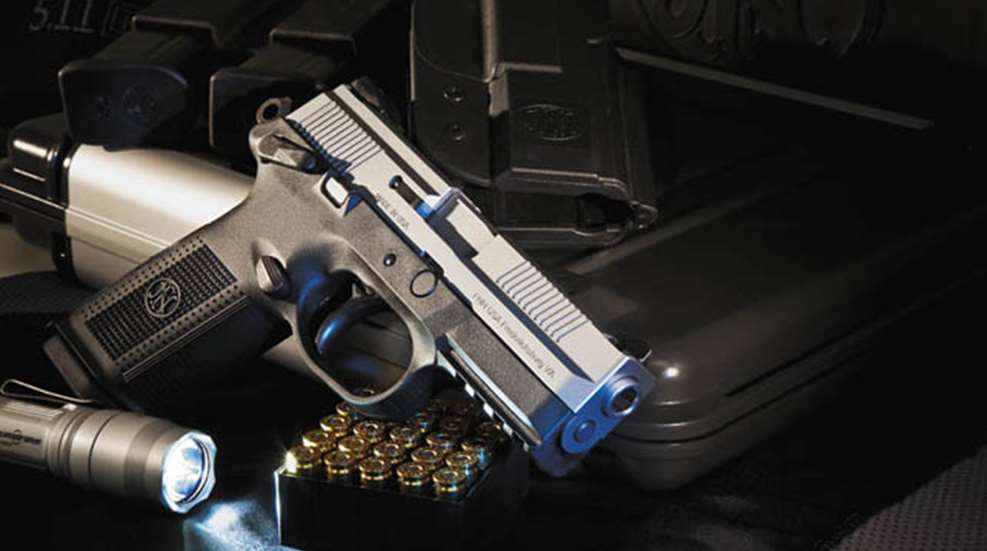
Ergonomics. On any given day you'll hear about how their implementation has improved everything from refrigerators to wrenches. In some cases involving the more mundane domestic items, it's easy to gloss right over them. But while the role ergonomics play in perfecting the design of the cup holders (all 11 of them) gracing the latest Super Mom minivan is amusing at best, their importance in a pistol cannot be overrated. Better ergonomics can make a handgun easier to shoot, which is serious stuff.
For all of us non-engineers, ergonomics as they apply to the human hand include two basic truths: Hard angles and sharp corners are bad. Soft curves and rounded edges are good. Lucky for us, the use of molded polymer allows designers to give modern pistol frames more curves than Eva Mendes. In other words, they feel good in the hand.
The latest 9 mm pistol from FNH USA, the FNX-9, is no exception. In order for any new polymer-framed handgun to stand out in a sea of existing models, it has to be comfortable to shoot accurately and repeatedly. It has to be fast into action, with the frame naturally fitting the hand and the sights easy to find upon presentation. It has to be controllable under recoil. Finally, it has to be reliable. An emphasis on ergonomics, combined with a proven operating system, garners high marks for the FNX-9 in all these areas.
All in the FNH Family
A quick look at the history of FNH USA and its Belgium-based parent, FNH, shows that the pair has plenty of experience when it comes to building quality firearms meant for hard duty—especially 9 mm pistols. After all, FNH is inextricably tied to John M. Browning and his 9 mm Hi Power, which has gone on to become adopted by militaries and law enforcement agencies in more than 70 countries. FNH USA is the marketing, sales and service arm for FNH firearms in the United States. The production branch here is FN Manufacturing, an awe-inspiring facility in Columbia, SC, that turns out the M249 SAW, M240B and MK 16—among other very powerful and fast-shooting things—under U.S. government contract. It also makes several lines of rifles, carbines and pistols for law enforcement and civilian use—including the FNX-9.
FNH USA has offered polymer-framed pistols made at the Columbia plant for several years. Among them are the FNP-9, FNP-40 and FNP-45. (If you haven't figured it out by now, the number at the end signifies caliber.) So while the new FNX-9 has lineage, its closest relative may come as a surprise. It isn't based on the 9 mm FNP-9; instead, the basic design for the FNX-9 came from the .45 ACP FNP-45.
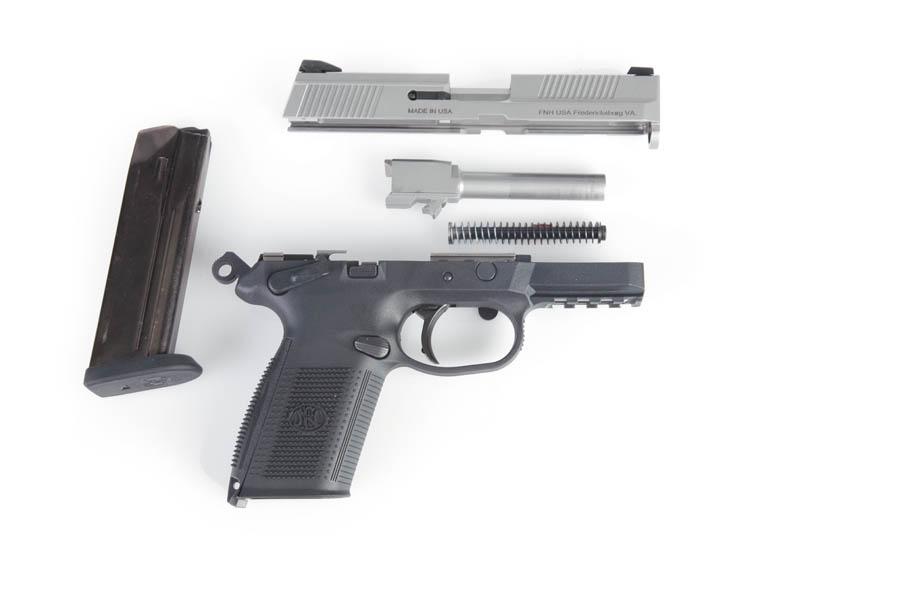
As is often the case with polymer-pistol lines, a model chambered in .45 ACP is the last to reach production. So it was with the FNP-45, with looks and features that made it the FNP family's odd man out. Odd can sometimes be good, though, and the FNP-45 came with a number of enhancements over the other two pistols in the line—enhancements that were designed to make it a contender in the U.S. Army's search for a new service pistol, which later became, and remains, delayed.
So while our troops may not be issued the FNP-45—or any new sidearm, for that matter—in the near future, civilians get a fine gun that has grown out of FNH USA's developmental efforts. The FNX-9 shares many features with the FNP-45 and, as such, is fully equipped for duty. There are differences between the two—namely chambering and dimensions—but by nature of design, the FNX-9 should prove more than worthy for self-defense and concealed carry.
Polymer Pros
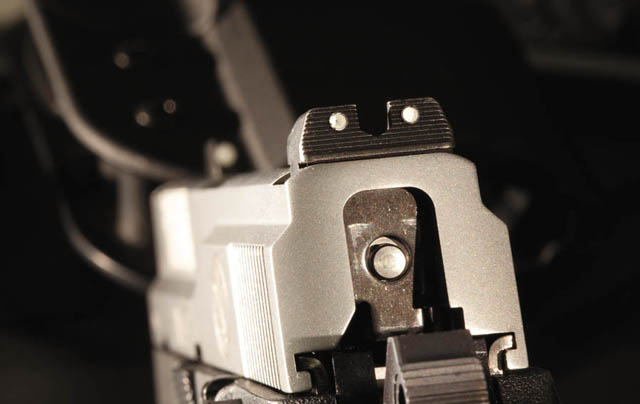
The first thing I noticed about the FNX-9 when I opened the pistol's case and saw it nestled against the bright blue liner was it came with three magazines. Then I discovered the magazines held 17 rounds. A few seconds later I realized that for a polymer pistol having a double-stack magazine, the FNX-9 felt surprisingly trim and well balanced.
The gun's designers took full advantage of the benefits offered by rigid polymer, keeping the walls of the grip area thin while maintaining strength. Just above the backstrap, the frame curves inward before sweeping back to form a beavertail that protects your hand from hammer bite. The radius of this transition is effectively designed to allow a high grip on the gun, and the smooth curves along the edges of this area match up comfortably with the fleshy pocket between the thumb and index finger of your strong hand. To further help your hand ride high on the gun, the portion of the frame located beneath the rear of the trigger guard is slightly dished out, making room for the middle finger when the gun is held in a shooting grip. It isn't magic; it's simply very ergonomic.
These factors result in a low bore axis, minimizing the separation between the imaginary centerline of the bore and your hand. A low bore axis helps you control the gun under recoil and minimize muzzle flip. The more in line the muscle groups of your strong-side arm are with the bore, the more effectively they can absorb the forces generated by firing a round. In addition, a low bore axis helps you point the gun more naturally, because there is less offset between the muzzle and the hand you are using to direct the pistol to the target.
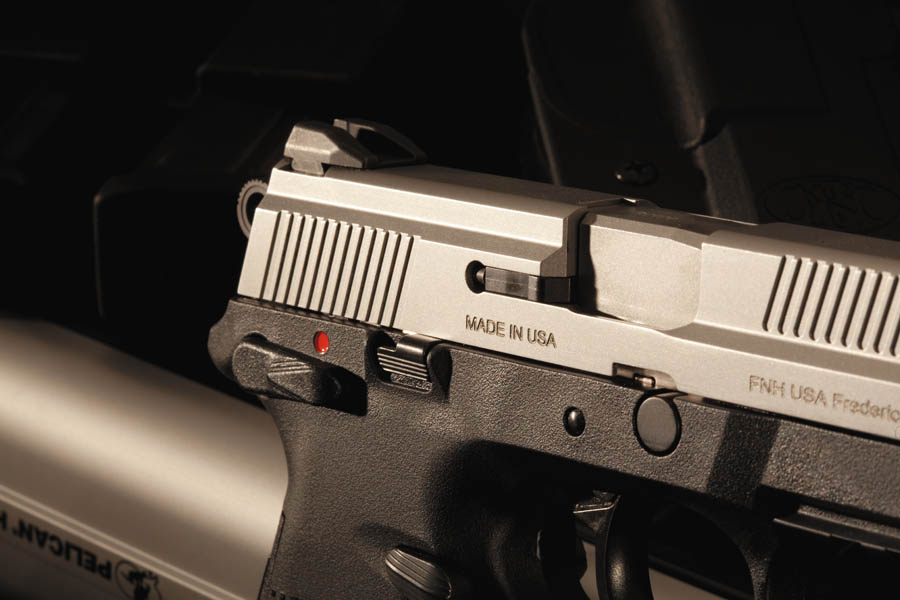
Both sides of the grip frame have panels of deep, molded checkering, while the frontstrap features horizontal serrations. The backstrap can have either, depending on your preference, since the FNX-9 comes with four inserts sporting both patterns. Two inserts are curved, and two are flat. All come with a hole to accommodate a lanyard ring.
Another nice attribute of the pistol's frame is a slightly flared magazine well to aid in quick reloads. The frame also has a section of MIL-STD 1913 rail for mounting accessories. Like on the FNP-45, the rail has four slots, which offer more options for positioning lights and lasers than the FNP-9's one-slot design.
The controls built into the frame of the FNX-9 are sturdy and adhere to the ergonomic theme of the pistol. First, the gun comes with a manual safety/decocking lever, which means you can carry the FNX-9 cocked and locked for a single-action first shot or with the hammer down in double-action mode. When the lever is up, the manual safety is engaged. Swipe it down to the middle position to disengage the safety. Push further, and the lever safely drops the hammer before rebounding to the middle position.
Just forward of the manual safety/decocking lever is the slide lock, protected from inadvertent deployment by a raised area of frame that serves as fencing. The teardrop-shaped magazine-release button is located in the familiar position at the rear of the trigger guard.
The manual safety/decocking lever is polymer, while the slide lock and magazine-release button are steel. All these controls have serrations for positive operation, and all are ambidextrous, meaning the lever, lock and button on the right side of the pistol mirror those on the left.
The Old With the New
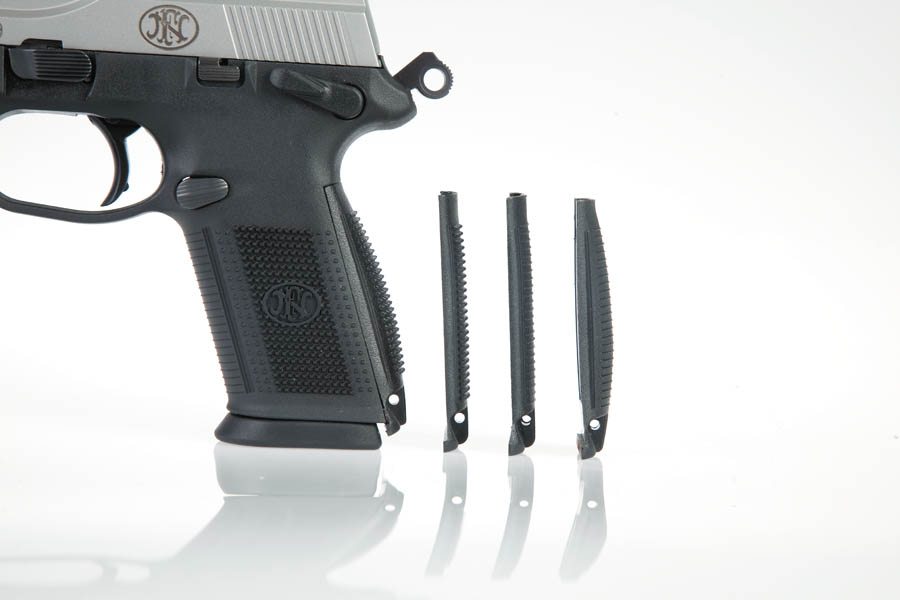
The FNX-9's stainless steel slide houses a 4-inch, hammer-forged, stainless steel barrel with a rectangular breech area. A flat milled into the front of this provides lockup with the slide. Underneath is a captive recoil spring assembly, which interfaces with a lug on the bottom of the barrel.
As the slide moves toward the rear after a round is fired, the barrel cams down to disengage from the slide, allowing it to eject the spent case, cock the hammer, chamber a fresh round from the magazine and complete the cycle with help from the recoil spring assembly. Understandably, Browning's legacy is alive and well in the operating system of the FNX-9.
Generous areas of vertical cocking serrations are present at the front and the rear of the slide to help with manual manipulation. The front half of the slide is milled to reduce its width along the upper portion. Beveling at the front of the slide and the frame makes holstering the FNX-9 easier.
The slide's external extractor also serves as a loaded-chamber indicator. A chambered round forces the front section of the extractor outward, revealing a bright orange dot. Low-profile, three-dot, combat-style sights complete the slide.
Trial by Mud
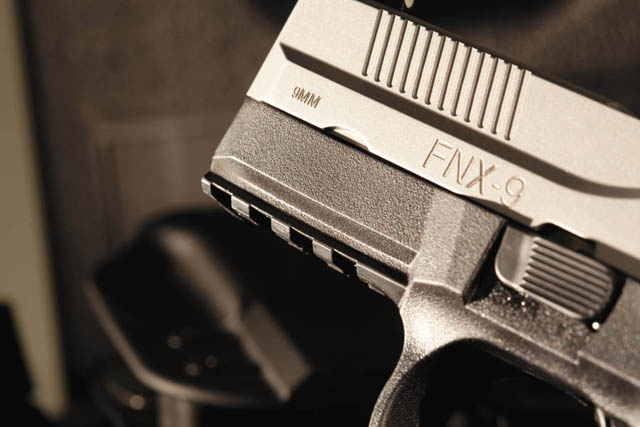
I had the opportunity to wring out the FNX-9 during the FNH USA Midwest 3-Gun Championships in Columbia, MO. Unfortunately, the gun wasn't the only thing that needed wringing. The central Missouri area received heavy rains for several days leading up to the match, and the Fire for Effect range had become a mud hole.
Nevertheless, the match proved to be a good test of ability for the FNX-9, not to mention my shooting skills. With the pistol constantly strapped to my belt in a Blade-Tech polymer holster, I couldn't complain about how it rode. There was kneeling, bending and crawling, but the FNX-9 never caused me any discomfort during carry.
Of course, I shot the gun a lot—too much, in fact, when you consider my hit-to-miss ratio. But I can't fault the pistol. When I did my part by concentrating on the front sight and pressing the trigger instead of ripping it, those ignorant little 5-inch steel plates took a tumble—even at distances approaching 20 yards.
My only complaint was with the manual safety/decocking lever. It functioned just fine, but its lower rear corner had a nasty habit of repeatedly digging into the base of my thumb. A little more rounding in this area to match the lever to the contour of the frame would be of help.
Later, accuracy testing confirmed my hunch: This gun shoots better than I can shoot it, at least during a match while wearing muddy boots. With an overall group average of about 3.5 inches at 25 yards, and no failures to feed or fire, the FNX-9 is as accurate as it is reliable. And did I mention its ergonomics?
Manufacturer: FNH USA; (703) 288-1292
Action: Recoil-operated, semi-automatic
Caliber: 9 mm
Capacity: 17+1
Frame: Polymer
Slide: Stainless steel
Finish: Matte silver
Barrel: 4 inches; hammer-forged stainless steel
Rifling: 6 grooves; 1:10-inch RH twist
Sights: Fixed, three-dot, combat-style with Deep-V rear notch
Trigger Pull Weight: 4 pounds, 8 ounces, SA; 11 pounds, 4 ounces, DA
Length: 7.31 inches
Width: 1.55 inches
Height: 5.45 inches
Weight: 21.9 ounces
Accessories: Lockable, hard polymer case; cable lock; three, 17-round magazines; four backstrap inserts; owner's manual
MSRP: $699












